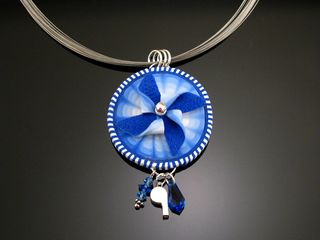
If you have fingers that like to fidget, as I do, or just enjoy artwork that has a movement component – you should go check out the “kinetic” gallery at Lisa Pavelka’s website
Click here to go directly to her blog, where she tells us we’ll soon be seeing instructions for these in books and magazines. Definitely something to look forward to!

Awesome! Lisa always has such good ideas!
I love to fidget with my jewelry. Will have to think of ways to incorporate more movement into my own jewelry. Looks like a lot of fun!